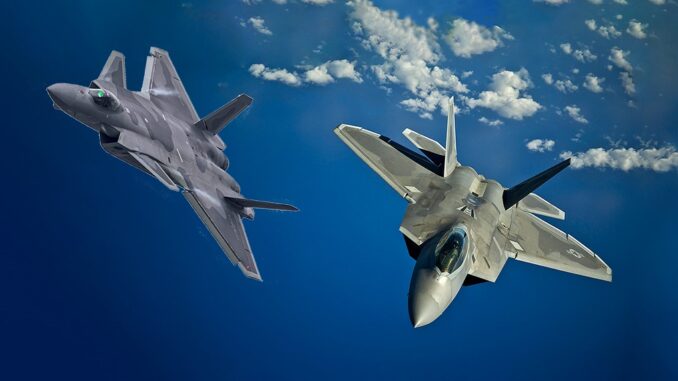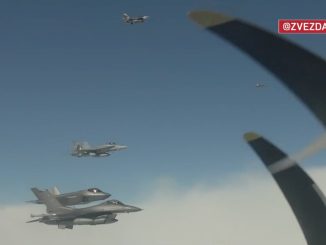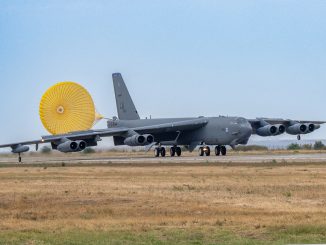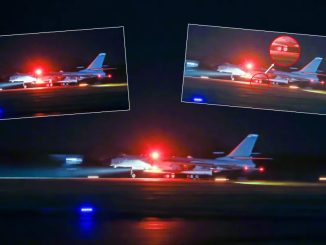
Experts have recently warned that the PLAAF 5th gen fighter, thanks to the espionage efforts, is more advanced than it otherwise would be. But the real question is: has China been able to catch up?
Experts in the United States are warning that more precautions should be taken to protect American military technology from Chinese espionage efforts, as China made huge developmental leaps in military technology thanks to stolen data. Because of this, the Chinese Chengdu J-20 “Mighty Dragon” should not be underestimated, stated a report emerged few days ago.
“What we know is that because of the espionage efforts, the J-20 is more advanced than it otherwise would be, and that’s the important point here,” former Acting Under Secretary of Defense for Policy James Anderson told Fox News Digital in an interview. “They have profited greatly from their thievery over the years, they’ve put it to good use, and they’ve come up with an advanced fifth-generation fighter.”
The development of the J-20 started somewhere in the 2006-2007 timeframe, with the goal to design a warplane that would be able to compete with US fighters and with the People’s Liberation Army Air Force endorsing Chengdu’s proposal in 2008. The prototype flew for the first time few years later, in 2011, followed by at least two other prototypes which showed multiple changes, until the design was finalized for mass production in 2017 and the J-20 was inducted into service.
Since 2015 reports noted similarities in technology and capability between the J-20 and US fighter jets, with some even pointing out that some of its technology may have US origin. The J-20 demonstrated that China is beginning to bridge the technological chasm with the United States because of its ongoing intellectual property theft, however Anderson noted that it’s difficult to determine how the J-20 matches up against the F-22 Raptor “short of actual combat.”
During the interview with Fox News, Anderson said that China employs a variety of espionage techniques, ranging from the simple and old-school spies, honey traps and bribes, to the more modern cyber-attacks. He also noted that China spent over a decade pursuing data about the F-35 and the Joint Strike Fighter program and had some success stealing precious info that helped the design of the J-20.

Matt McInnis, a senior fellow for the Institute for the Study of War’s China program, explained that the desire to understand the inner workings of the more sophisticated Western jet engines has been a substantial component of Chinese espionage. In fact, he said that China has placed its focus “almost more than anything else” on acquiring jet engine technology after “struggling for decades” to stay on pace with the US.
In the past, China powered its fighter jets mainly with variants of the Russian-made Saturn AL-31 engine, which were used as an interim solution on the J-20 in the AL-31FM2 variant. The Saturn engine was replaced by the Shenyang WS-10, which was reportedly derived from both the AL-31 and the CFM56 engine (which powers Airbus A320-series and Boeing 737 airliners, as well as the KC-135R tanker). Again, this is an interim solution while the final Xian WS-15 engine undergoes flight testing.
The espionage in the engine sector was extensively covered last year, when a Chinese spy was convicted of trying to steal trade secrets from multiple US aviation and aerospace companies, including theft of proprietary airplane engine fan technology. According to prosecutors, the spy recruited experts from GE Aviation and other companies as far back as 2013.
McInnis also mentioned the recent news about the attempted recruitment of former Western pilots to advise and train the PLAAF pilots, another topic that was highly discussed following the huge attention it got from medias. In his opinion, McInnis says that between the knowledge transferred by Russia and the info acquired trough espionage, China was able to reduce its technology gap with the West from a 20- or 30-year gap to a 10- or 15-year gap.
James Hess, professor at the School of Security and Global Studies at American Public University System, said that ultimately the US has to contend with China’s “philosophical difference” and willingness to do what is “best for China.” As Hess explained, the Chinese mentality sees the thief of knowledge as a positive thing if it provides a betterment for the society, instead of worrying about it being a capital offense or not.

Although they got some attention on social media lately, China’s efforts to imitate U.S. 5th generation aircraft to develop their own stealth fighters have almost never been questioned: it is widely believed that China may have acquired information and technology related to the F-22 through cyber espionage and other means. But the development of advanced military technology often involves a certain degree of imitation and emulation of existing designs, and this is not unique to China.
That being said, building an aircraft requires a systematic endeavour and know-how in several different fields, spanning from aerodynamics, to material science, to avionics, to propulsion. In other words, stealing some concept design or blueprint of some of the core technologies will hardly allow a peer enemy to reverse engineer and develop a weapon system as advanced as the original one.
Therefore, the most interesting question is not whether it stole some details about the F-22 to build its J-20, but if China has really been able to catch up.
A really interesting article on this topic was published on International Security, the most important journal in the field of strategic studies, in 2019. Titled “Why China Has Not Caught Up Yet: Military-Technological Superiority and the Limits of Imitation, Reverse Engineering, and Cyber Espionage”, it examines China’s efforts to imitate U.S. stealth fighters and the results Beijing has achieved.
Here are some excerpts:
“In 2007, 2009, and 2011, Chinese hackers entered the servers of the Pentagon and gained access to some fifty terabytes of data containing the designs and blueprints of U.S. stealth fighters, as well as other critical information. China has also relied extensively on traditional industrial espionage, including the recruitment of former engineers and scientists who worked for Western aerospace organizations. Together, industrial and cyber espionage have given China extensive access to American know-how. Moreover, China managed to obtain an F-117 that crashed in Serbia in 1999, allowing it to inspect, analyze, and possibly reverse engineer the aircraft’s stealth features.”
[…]
“Nevertheless, China’s aerospace industry has struggled enormously to imitate U.S. technology. In 2017, China commissioned the J-20, a step that many analysts viewed as the end of the U.S. monopoly on fifth-generation fighters. Yet, serious doubts persist about whether the performance of the J-20 comes even close to that of the F-22. In fact, anonymous Chinese sources have admitted that China rushed the J-20 into service in response to increasing tensions in the South China Sea, despite capability gaps that make it inferior to the F-22.”
In the end, the study says, “China’s struggle to develop an indigenous aircraft engine throws into question the theory that China has closed the military-technological gap with the United States with respect to fifth-generation fighters. Possibly, even more important, it also illustrates that the advantages of imitation that China has enjoyed have inevitably been limited.”
In short, while reverse engineering, industrial espionage, and cyber espionage can facilitate and accelerate the process of imitating advanced weapon systems, it is not a straightforward or easy process….



